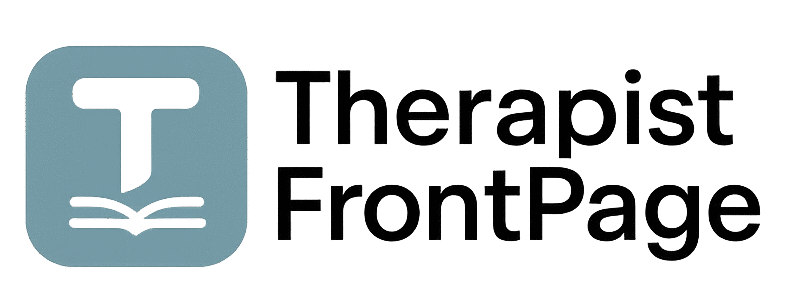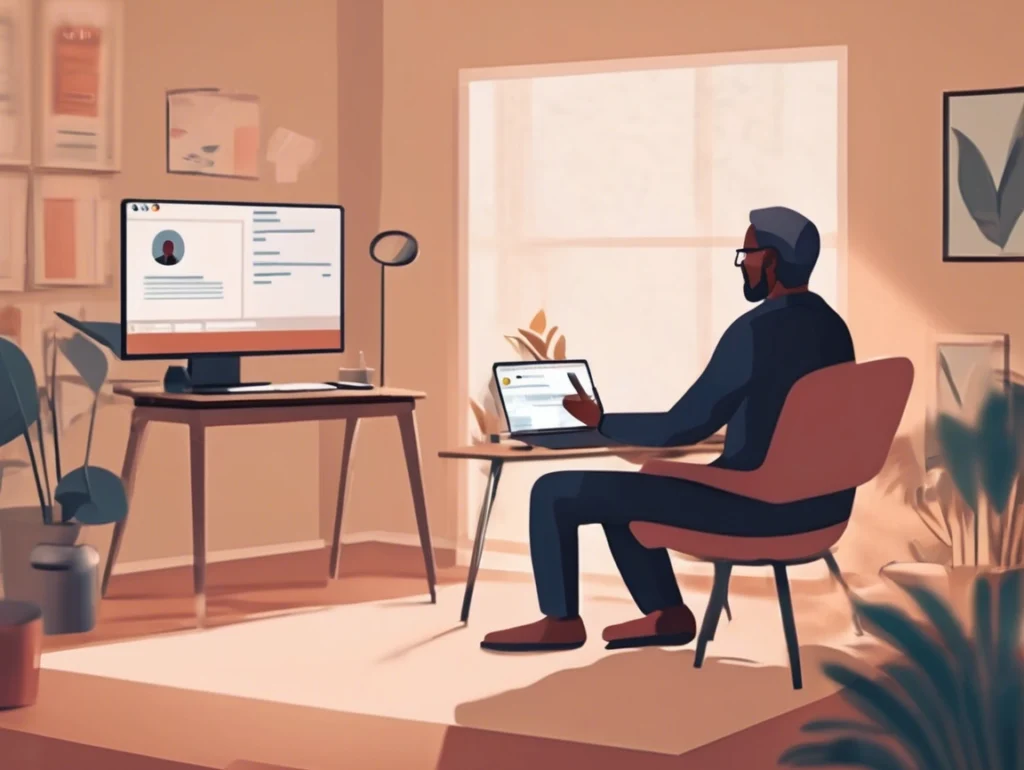last updated: August 2, 2025
Running a private-practice in California means we spend almost as much time wearing a billing hat as we do our therapist hat. After too many rejected claims and late-night resubmits, I finally pulled together everything I wish I’d known about billing Medi-Cal for telehealth sessions. I hope it saves you some headaches.
Medi-Cal Therapy Billing in California (2025)
Video vs Audio-Only Telehealth: Modifier 95 vs 93
| Modifier | Modality | Quick rule-of-thumb | Does it change payment? |
|---|---|---|---|
| 95 | Real-time audio + video | Use when you and the client can both see and hear each other (e.g., Zoom, Doxy). | No. Reimbursed at the same fee schedule as in-person. |
| 93 | Real-time audio-only | Use when the client joins by phone and there is no video. | No. Same rate as in-person, but you must document medical appropriateness. |
Pro tip: Document a short clinical rationale if you switch from video to audio-only mid-session—auditors look for that note.
Medi-Cal explicitly states that “the use of modifier 93 [or 95] does not alter reimbursement for the CPT or HCPCS code.” (mcweb.apps.prd.cammis.medi-cal.ca.gov, dhcs.ca.gov)
Place of Service (POS)
- 02 – Telehealth provided other than patient’s home (most community situations)
- 10 – Telehealth provided in patient’s home (common for therapy)
If your managed-care plan (MCP) has its own POS preference, follow that, but most accept 02 across the board.
Which Individual Psychotherapy Codes Medi-Cal Covers
| CPT | Description | Typical length |
|---|---|---|
| 90791 | Diagnostic evaluation | 60 min |
| 90832 | Psychotherapy, 30 min | 25-35 min |
| 90834 | Psychotherapy, 45 min | 38-52 min |
| 90837 | Psychotherapy, 60 min | 53 min + |
All four are payable via telehealth when billed with 93 or 95, so long as you meet documentation standards. (mcweb.apps.prd.cammis.medi-cal.ca.gov) Keep track of time in your note—the code definitions haven’t changed.
Required Elements in Telehealth Documentation
- Location of client (city/ZIP) and provider.
- Telehealth modality used (audio-video or audio-only).
- Modifier (93/95) and POS (02 or 10).
- Client consent for telehealth (verbal or written) & date obtained.
- Clinical content that supports the CPT code—the same as in-person.
- Any technical issues and their impact on clinical care.
DHCS notes that no separate “telehealth form” is required, but the above must be present in the progress note. (dhcs.ca.gov)
Common Denial Reasons & Quick Fixes
| Denial reason | The fix |
|---|---|
| Missing modifier | Add 93 or 95 and resubmit. |
| Wrong POS | Use 02 or 10 consistently. |
| Timed service without duration | Document start/stop times or total minutes. |
| Non-covered code | Stick to 90791, 90832, 90834, 90837 for therapy. |
| Provider license lapse on file | Update CA license in MCP portal before resubmitting. |
I keep a copy-and-paste checklist in my EHR so nothing gets missed.
FAQs
Author
Mason Anglin, LMFT
Licensed Marriage & Family Therapist, California
I’ve been running a fully hybrid in-person/remote private-practice since 2022.
Not Legal or Billing Advice
This article is for educational purposes only and does not constitute legal, billing, or tax advice. Always verify requirements with DHCS and your Medi-Cal managed-care plan.
Sources
- Medi-Cal Provider Manual: Medicine – Telehealth (updated June 2025). (mcweb.apps.prd.cammis.medi-cal.ca.gov)
- All Plan Letter 23-007 – Telehealth Services Policy (DHCS, April 10 2023). (dhcs.ca.gov)
Medi-Cal Telehealth Billing for Therapists in California (2025)
Last updated: August 4, 2025
Executive Summary: Payment parity holds. Use 95 for audio+video and 93 for audio-only. Use POS 10 when the member is at home, POS 02 when they are not at home, and POS 11 only for in-person office services (or when billing the originating-site fee if the member is physically in your office).
Modifiers That Drive Clean Telehealth Claims
| Modifier | Modality | Use |
|---|---|---|
| 95 | Synchronous audio+video | Use for real-time video sessions (Zoom, Doxy, etc.). |
| 93 | Synchronous audio-only | Use for phone-only sessions; document clinical appropriateness + member consent. |
| GT / SC | County BH (SMHS/DMC) | Counties often require GT (video) and SC (audio-only) on HCPCS lines. |
Rate impact: 93/95/GT/SC identify modality; they don’t change the fee schedule for covered services.
Place of Service (POS): 10 vs 02 vs 11
- POS 10 — Telehealth provided in the patient’s home.
- POS 02 — Telehealth provided other than the patient’s home (school, work, community site, car, etc.).
- POS 11 — Office. Use for in-person services only. Do not use POS 11 on the distant-site telehealth professional claim.
Decision Matrix
| Scenario | POS | Modifier | Notes |
|---|---|---|---|
| Telehealth, member at home | 10 | 95 (video) or 93 (audio-only) | Document consent + clinical appropriateness for audio-only. |
| Telehealth, member not at home (e.g., school) | 02 | 95 or 93 | Capture member location city/ZIP in the note. |
| In-person visit in your office | 11 | None | Standard documentation (no telehealth elements). |
| Member is physically in your office, connecting to a remote specialist | 11 (your claim) / 10 or 02 (distant specialist) | Q3014 (your claim), distant specialist uses 95 or 93 | You’re the originating site; you may bill Q3014. The distant specialist bills the professional service with POS 10/02. |
Psychotherapy Codes That Work Well Over Telehealth
| CPT | Description | Time guardrail |
|---|---|---|
| 90791 | Diagnostic evaluation | Document work performed |
| 90832 | Psychotherapy | 16–37 min |
| 90834 | Psychotherapy | 38–52 min |
| 90837 | Psychotherapy | 53+ min |
Pick the code that best matches the actual minutes; <16 minutes is not billable as psychotherapy.
Documentation Checklist (Copy/Paste Into Your EHR)
- Member location (city/ZIP) and provider location.
- Modality + modifier (95 video / 93 audio-only) and POS (10 home / 02 not home).
- Telehealth consent (verbal or written) + date; for audio-only, note why it’s clinically appropriate.
- Clinical content supporting the CPT code; include total minutes for time-based codes.
- Any tech issues and impact (e.g., pivoted video → phone due to connectivity).
Common Denials & Fast Fixes
| Denial | Root Cause | Fix |
|---|---|---|
| Wrong POS | Telehealth billed with POS 11 | Use 10 (home) or 02 (not home); reserve 11 for in-person or originating-site Q3014. |
| Missing/incorrect modifier | No 95/93 (or wrong one) | Align modifier to modality; ensure consent for audio-only. |
| Time not supported | 90834/90837 without defensible minutes | Document actual time; select code per guardrails. |
| County BH mismatch | Used 95/93 where county requires GT/SC | Follow county SMHS/DMC tables (GT = video; SC = audio-only on HCPCS). |
FAQs
Does telehealth change my rate? No. Parity applies when the service is the same and clinically appropriate.
Can I bill Q3014? Only when you act as the originating site with the member physically present at your location; distant-site pro claims still carry POS 10/02 with 95/93.



